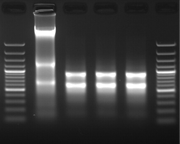Risultato
Perfeziona la ricerca

VWR® for nucleic acid preparation
Featuring solutions covering the entire workflow: Sample disruption & homogenisation, nucleic acid isolation, photometry, centrifugation & storage.
Need pure DNA or RNA?
get it quick & easy.
Hai cercato: CENTRE+FOR+DISEASE+CONTROL+AND
489 720 risultati sono stati trovati
SearchResultCount:"489720"
Sort Results
Visualizzazione a lista
Nuova Visualizzazione
Visualizzazione a lista
Nuova Visualizzazione